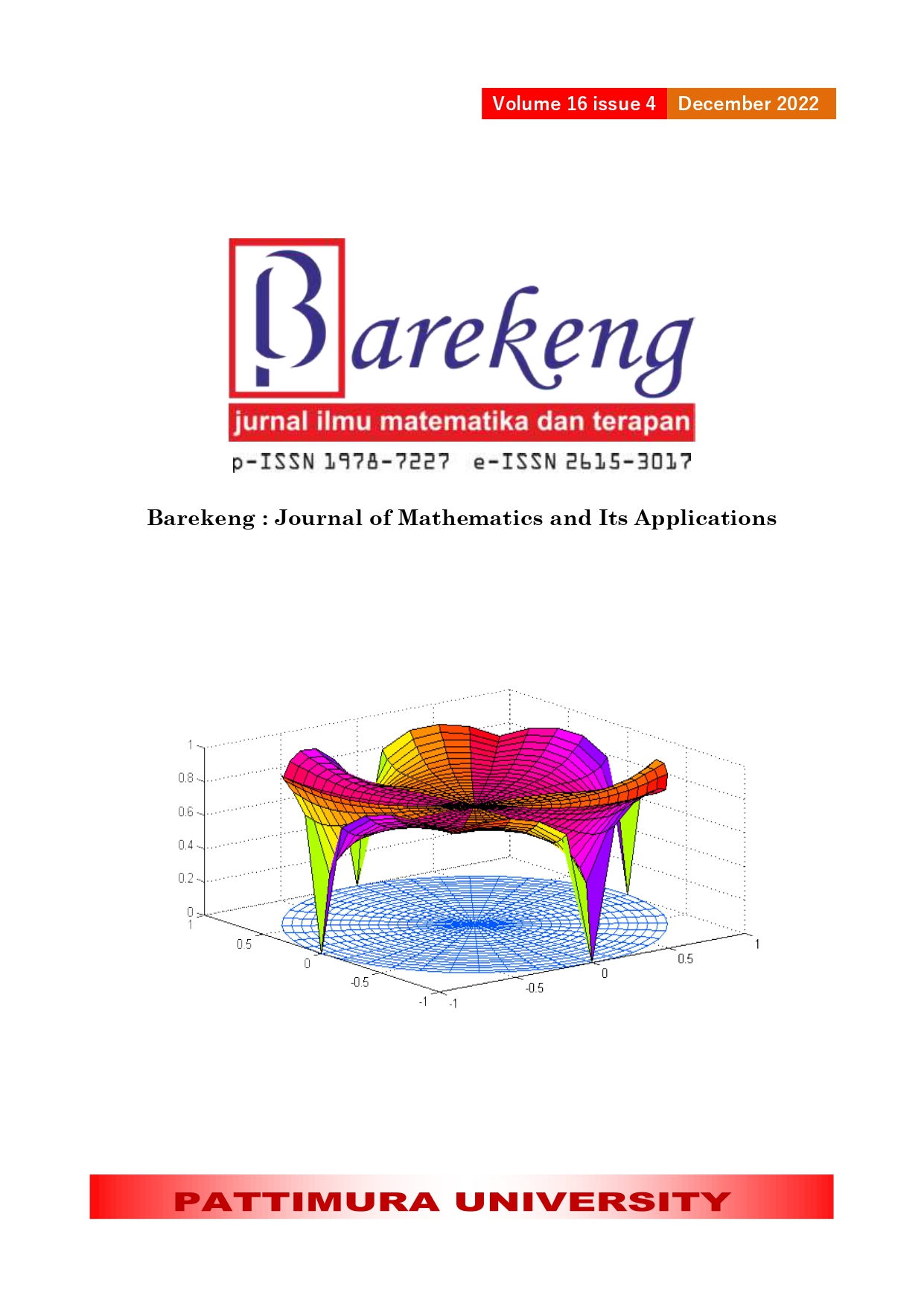A COMPARISON OF COX PROPORTIONAL HAZARD AND RANDOM SURVIVAL FOREST MODELS IN PREDICTING CHURN OF THE TELECOMMUNICATION INDUSTRY CUSTOMER
Abstract
The Cox Proportional hazard model is a popular method to analyze right-censored survival data. This method is efficient to use if the proportional hazard assumption is fulfilled. This method does not provide an accurate conclusion if these assumptions are not fulfilled. The new innovative method with a non-parametric approach is now developing to predict the time until an event occurs based on machine learning techniques that can solve the limitation of CPH. The method is Random Survival Forest, which analyzes right-censored survival data without regard to any assumptions. This paper aims to compare the predictive quality of the two methods using the C-index value in predicting right-censored survival data on churn data of the telecommunication industry customers with 2P packages consisting of Internet and TV, which are taken from all customer databases in the Jabodetabek area. The results show that the median value of the C-index of the RSF model is 0.769, greater than the median C-index value of the CPH model of 0.689. So the prediction quality of the RSF model is better than the CPH model in predicting the churn of the telecommunications industry customer.
Downloads
References
D. G. Kleinbaum and M. Klein, Survival Analysis A Self-Learning Text, Third Edit. 2012.
J. Harlan, Analsis Survival. Depok: Gunadarma, 2017.
H. Meiling and Y. Lin, “Nonparametric Inference for Right Censored Data Using Smoothing Splines Statistica Sinica Preprint No : SS-2017-0357 Title Nonparametric Inference for Right Censored Data Using Smoothing Splines Complete List of Authors Meiling Hao Yuanyuan Lin and Xingqi,” no. February, 2019, doi: 10.5705/ss.202017.0357.
U. B. Mogensen, H. Ishwaran, and T. A. Gerds, “Evaluating Random Forests for Survival Analysis Using Prediction Error Curves,” J. Stat. Softw., vol. 50, no. 11, pp. 1–23, 2012, doi: 10.18637/jss.v050.i11.
K. Afrin, G. Illangovan, S. S. Srivatsa, and S. T. S. Bukkapatnam, “Balanced Random Survival Forests for Extremely Unbalanced, Right Censored Data,” no. April, 2018, [Online]. Available: http://arxiv.org/abs/1803.09177.
D. K. Mageto, S. M. Mwalili, and A. G. Waitutu, “Modelling of Credit Risk: Random Forests versus Cox Proportional Hazard Regression,” Am. J. Theor. Appl. Stat., vol. 4, no. 4, p. 247, 2015, doi: 10.11648/j.ajtas.20150404.13.
M. Saadati and A. Bagheri, “Comparison of Survival Forests in Analyzing First Birth Interval,” Jorjani Biomed. J., vol. 7, no. 3, pp. 11–23, 2019, doi: 10.29252/jorjanibiomedj.7.3.11.
J. Ruyssinck et al., “Random Survival Forests for Predicting the Bed Occupancy in the Intensive Care Unit,” Comput. Math. Methods Med., vol. 2016, 2016, doi: 10.1155/2016/7087053.
J. B. Nasejje, H. Mwambi, K. Dheda, and M. Lesosky, “A comparison of the conditional inference survival forest model to random survival forests based on a simulation study as well as on two applications with time-to-event data,” BMC Med. Res. Methodol., vol. 17, no. 1, pp. 1–18, 2017, doi: 10.1186/s12874-017-0383-8.
A. Ptak-chmielewska and A. Matuszyk, “Application oF The Random Survival Forests Method in The Bankruptcy Prediction,” vol. 1, no. 1, 2020, doi: 10.15611/aoe.2020.1.06.
P. C. Austin, “Generating survival times to simulate Cox proportional hazards models with time-varying covariates,” Stat. Med., no. November 2011, 2012, doi: 10.1002/sim.5452.
H. Ishwaran, U. B. Kogalur, E. H. Blackstone, and M. S. Lauer, “Random survival forests,” Ann. Appl. Stat., vol. 2, no. 3, pp. 841–860, 2008, doi: 10.1214/08-AOAS169.
J. Wang, “Apply Machine Learning Approaches to Survival Data,” Imperial College London, 2018.
A. Schlossberg et al., “Cox Proportional Hazard Regression,” no. July, 2016.
B. C. Jaeger, S. Welden, J. L. Speiser, K. Lenoir, and M. Segar, “A CCELERATED AND INTERPRETABLE OBLIQUE RANDOM,” 2022.
A. Hazewinkel, H. Gelderblom, and M. Fiocco, “Prediction models with survival data : a comparison between machine learning and the Cox proportional hazards model,” no. Ml, 2022.
Copyright (c) 2022 Sitti Nurhaliza, Kusman Sadik, Asep Saefuddin

This work is licensed under a Creative Commons Attribution-ShareAlike 4.0 International License.
Authors who publish with this Journal agree to the following terms:
- Author retain copyright and grant the journal right of first publication with the work simultaneously licensed under a creative commons attribution license that allow others to share the work within an acknowledgement of the work’s authorship and initial publication of this journal.
- Authors are able to enter into separate, additional contractual arrangement for the non-exclusive distribution of the journal’s published version of the work (e.g. acknowledgement of its initial publication in this journal).
- Authors are permitted and encouraged to post their work online (e.g. in institutional repositories or on their websites) prior to and during the submission process, as it can lead to productive exchanges, as well as earlier and greater citation of published works.






1.gif)



